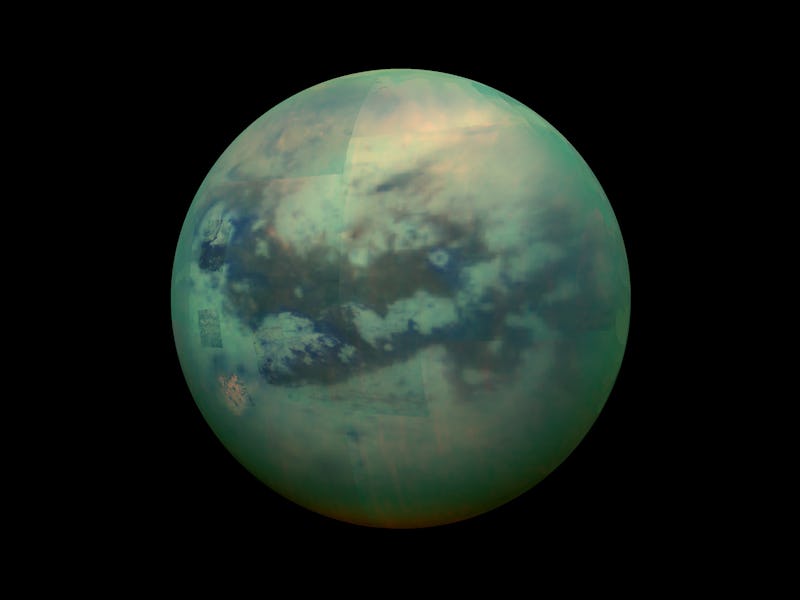Scientists mapped Titan's awe-inspiring terrain for the first time
Liquid methane lakes, icy dunes, and labyrinthine canyons pepper the landscape of Saturn's largest moon.

Navigating Titan, Saturn’s largest moon, is a challenge. Just getting close is hard enough — it’s hundreds of millions of miles away, after all. But let’s suppose either a robot or a human lands on the surface of the only other body in the Solar System known to have liquid on its surface. They’d need a map — and fortunately, NASA has one ready to go should the occasion ever arise.
In November 2019, scientists made the first ever map detailing the moon’s complicated — and terrifying — terrain. It reveals a moon filled with weird and wonderful geography, including dunes, liquid methane lakes, plains, labyrinthine canyons, and craters.
This is #10 on Inverse’s 20 wildest space discoveries of 2019
Titan is like Earth in many ways. Liquid on the surface evaporates and forms clouds. These clouds then bring the liquid back to the surface through rain. Surface water, with its ability to slowly bore through rock, can create stunning geologies. But there’s one big difference: On Earth, water fills the lakes and oceans and rainwater falls from the sky. On Titan, liquid methane and ethane rain down. These hydrocarbons exist only as gasses on Earth, but the temperature on Titan is so cold that they exist in a liquid state.
The first geological map of Titan shows its lakes, dunes and flat plains in unprecedented detail.
“Titan has an active methane-based hydrologic cycle that has shaped a complex geologic landscape, making its surface one of the most geologically diverse in the solar system,” said Rosaly Lopes, a planetary geologist at NASA’s Jet Propulsion Laboratory in Pasadena, California.
The map was created from data collected by NASA’s Cassini mission, which completed over 120 flybys of the large moon. Cassini, which was working in space from 2004 through 2017, had a radar imager capable of peering through the haze of a nitrogen and hydrogen atmosphere. Cassini observed Titan’s terrain using both visible and infrared instruments, which could could see through methane and image some of the larger physical features.
On the surface, they found vast sand dunes, comparable to Earth’s Arabia desert. But they’re not deserts of sand. On Titan, the dunes are solid water ice coated with hydrocarbons which fell from the atmosphere onto their surface. The dunes are, to quote NASA, “gigantic” — 0.6 to 1.2 miles (1 to 2 kilometers) wide, hundreds of miles long, and approximately 300 feet (100 meters) high.
If anyone ever gets to see the hydrocarbon dunes of Titan in person, they should prepare to be awed.
“The Cassini mission revealed that Titan is a geologically active world, where hydrocarbons like methane and ethane take the role that water has on Earth,” said planetary geologist David Williams of Arizona State University in Tempe at the time. “These hydrocarbons rain down on the surface, flow in streams and rivers, accumulate in lakes and seas, and evaporate into the atmosphere. It’s quite an astounding world!”
As 2019 draws to a close, Inverse is revisiting the year’s 20 wildest space stories. Some are awe-inspiring, some are bordering on science fiction, and some are just, well, wild. This is #10. Read the original article here.